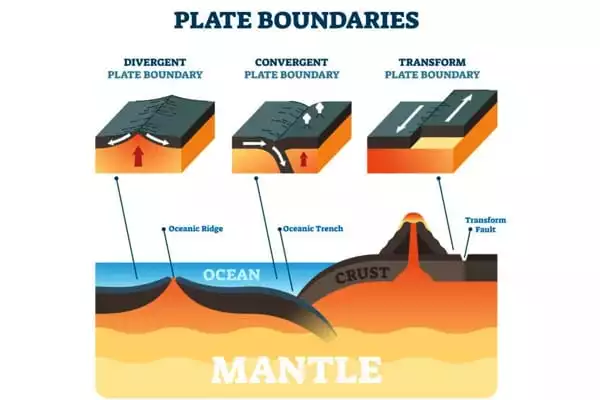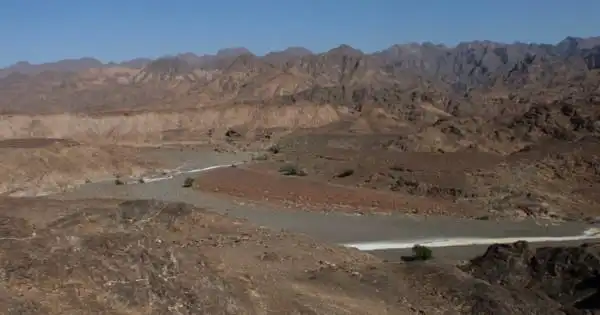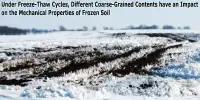The incorporation of nearly all geologic aspects of Earth’s outer rock shell (the lithosphere) into a unifying theory known as plate tectonics has had a significant impact on the scientific understanding of our dynamic planet. Continents move on huge slabs or plates of dense rock about 100 km (62 miles) thick, carried by a low-friction, partially melted zone (the asthenosphere) beneath.
According to an international team of scientists, ancient rocks on the coast of Oman that was once driven deep into the Earth’s mantle may reveal new insights into subduction, an important tectonic process that fuels volcanoes and creates continents.
“In general, this work helps us understand why some subduction zones fail while others establish long-term, steady-state systems,” said Joshua Garber, assistant research professor of geosciences at Penn State.
Our findings suggest that this continental material was not subducted deep into the mantle for as long as previously thought. Our data supports a nice sequence of events that occurred in a narrower window and makes more geological sense.
Joshua Garber
Subduction happens when two tectonic plates collide and one is pushed beneath the other. The denser oceanic plates normally subduct and descend into the mantle where oceanic and continental plates collide, according to scientists.
Oceanic plates occasionally move on top, or obduct, forcing continental plates downward toward the mantle. The buoyancy of the continental crust, however, can cause the subduction to fail, bringing the material back to the surface along with slabs of oceanic crust and upper mantle is known as ophiolites, according to scientists.
“The Arabian Peninsula’s Samail Ophiolite is one of the largest and best-exposed examples on the planet’s surface,” Garber said. “It’s one of the best-studied, but there are disagreements about how and when the subduction occurred.”
According to the researchers, the team, led by Penn State scientists, investigated the timing of the subduction using nearby rocks from the Saih Hatat formation in Oman, which was subducted under the Samail Ophiolite.

The process’s heat and pressure-formed garnet, zircon, and rutile crystals in a key suite of highly metamorphosed rocks that experienced the most extreme conditions during subduction. Using cutting-edge dating techniques, such as measuring isotopic dates and trace elements, the scientists determined that these minerals all formed around the same time, between 81 and 77 million years ago.
“What’s interesting about this is that they were all dated using slightly different methods, but they all produced essentially the same results,” Garber explained. “This indicates that all of the minerals in the rocks have a unified story.” At the same time, they all record the same metamorphic episode.”
The findings, published in the Journal of Geophysical Research: Solid Earth, contradict previous estimates that the event began 110 million years ago and occurred in phases, according to the scientists.
“Our findings suggest that this continental material was not subducted deep into the mantle for as long as previously thought,” Garber said. “Our data supports a nice sequence of events that occurred in a narrower window and make more geological sense.”
According to the scientists, the continental margin subducted following the obduction of the Samail Ophiolite. The most deeply subducted continental material was most likely anchored to more dense rocks, and when this anchor failed, the buoyant continental rocks were exhumed, first quickly, then slowly over a long period of time in the lower to the middle crust. It was eventually exposed in tectonic windows via the ophiolite.
“Subduction is a huge part of plate tectonics on Earth,” Garber explained. “Because it is the primary recycling mechanism for surface material to the deeper mantle, understanding how they eventually evolve into stable subduction zones or end abruptly is of great interest.” “I believe we’ve nailed down why this subduction zone ended and the sequence of events that occurred as a result.”
When continental plates collide, the edge of one plate is pushed up against the edge of the other. The rocks in the lower slab change in mineral content as a result of heat and pressure, and they will most likely be exposed at the surface again sometime later. Metamorphic rocks are those that have been transformed into new mineral assemblages as a result of changing temperatures and pressures.
Almost any rock now seen at the surface can be found in exposed deep crustal sections in a form that reveals the temperature and pressure of burial through its mineral content. Such crustal regions may even experience melting and subsequent extrusion of melt magma, which may appear as volcanic rocks on the surface or solidify as it rises to form granites at high crustal levels.
Andrew Smye, assistant professor of geosciences at Penn State, also contributed to this work.
















